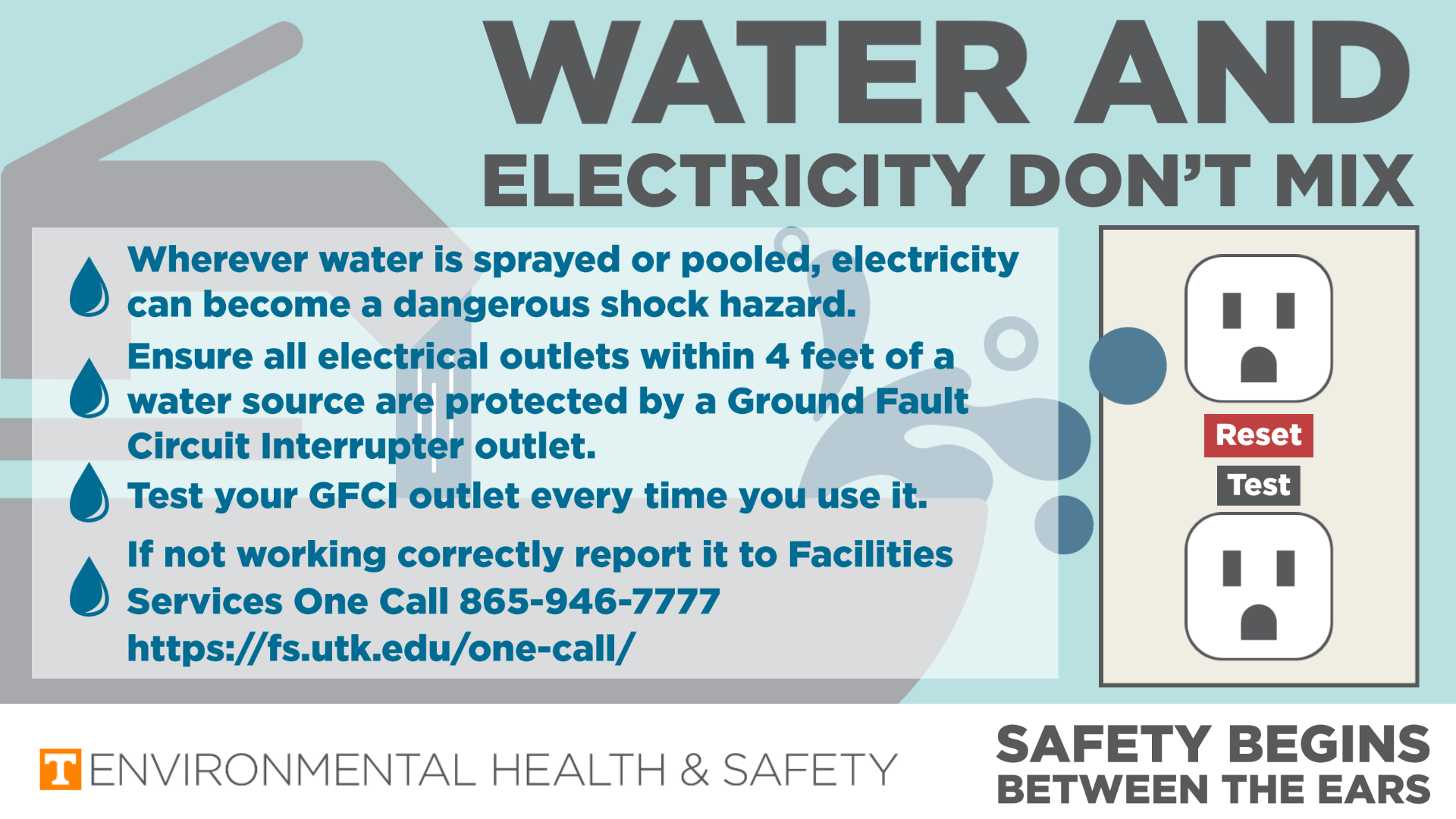On the UTK campus or even when doing remote work we can encounter wet conditions. For example we may have maintenance or engineering shops that spray water for machines or cleaning. Some areas may use water for washing down other areas as well. When water is present it’s important to keep electricity away. A Ground Fault Circuit Interrupter is one way to achieve that goal.

The Occupational Safety and Health Administration (OSHA) describes GFCIs as follows
A ground-fault occurs when there is a break in the low-resistance grounding path from a tool or electrical system. The electrical current may then take an alternative path to the ground through the user, resulting in serious injuries or death. The ground-fault circuit interrupter, or GFCI, is a fast-acting circuit breaker designed to shut off electric power in the event of a ground-fault within as little as 1/40 of a second. It works by comparing the amount of current going to and returning from equipment along the circuit conductors. When the amount going differs from the amount returning by approximately 5 milliamperes, the GFCI interrupts the current.
The GFCI is rated to trip quickly enough to prevent an electrical incident. If it is properly installed and maintained, this will happen as soon as the faulty tool is plugged in. If the grounding conductor is not intact or of low-impedance, the GFCI may not trip until a person provides a path. In this case, the person will receive a shock, but the GFCI should trip so quickly that the shock will not be harmful.
The GFCI will not protect you from line contact hazards (i.e. a person holding two “hot” wires, a hot and a neutral wire in each hand, or contacting an overhead power line). However, it protects against the most common form of electrical shock hazard, the ground-fault. It also protects against fires, overheating, and destruction of wire insulation.
What Can You Do?
- Wherever water is sprayed or pooled, electricity can become a dangerous shock hazard.
- Ensure all electrical outlets within four feet of a water source are protected by a Ground Fault Circuit Interrupter outlet, also known as a GFCI.
- Test your GFCI outlet every time you use it.
- If not working correctly, report it to Facilities Services One Call 865-946-7777 or https://fs.utk.edu/one-call/
How do you test a GFCI?
- Every time you use a GFCI you should ensure it works properly
- First plug in a device such as a lamp.
- Turn on the device.
- Press the Test button to trip the GFCI.
- If the lamp turns off then the test is successful; If not, discontinue use of the circuit and contact Facilities Services.
Learn more
For more information check out this OSHA article and eTool on different types of GFCIs especially those that apply in construction and remote work.
https://www.osha.gov/SLTC/etools/construction/electrical_incidents/gfci.html